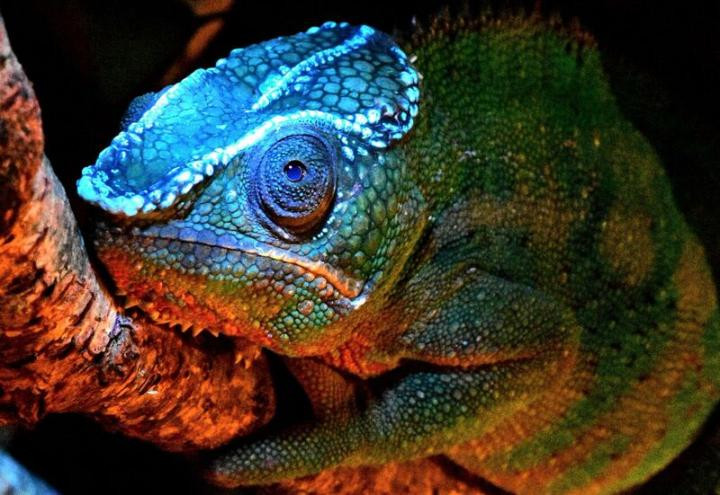Lizards found glowing in bizarre patterns under UV light, scientists baffled
All species showed blue, previously invisible patterns on the head, some even over the whole body.

Lizards are known to change colours to adapt to their surroundings. They can hide themselves to stay away from predators or stand out from the crowd to mate. However, for the first time, researchers have seen chameleons glowing in a bizarre, yet very intriguing way.
When put under ultra-violet (UV) light, the creatures were found to fluoresce in bright patterns, something that has not been observed before.
"We could hardly believe our eyes when we illuminated the chameleons in our collection with a UV lamp, and almost all species showed blue, previously invisible patterns on the head, some even over the whole body," says David Prötzel, lead author of a study that led to this unusual discovery.
Though the effect is common in marine organisms, spotting it in terrestrial vertebrates was quite a surprise for the German scientists who were part of the study. They found different fluoresce patterns in different species, with males in genus Calumma having more detailed patterns than females.
Considering the fact that blue is easily recognisable in the forest, researchers believe it could be the chameleon's own way of identifying members of the same species for mating.
The group conducted a series of sophisticated tests to decode the mystery behind this unique feature. While micro CT scans revealed that the glowing pattern matched perfectly with the pattern of tubercles — the bony feature protruding from the creature's skull, 3D reconstruction of tissue cells confirmed that the skin over these bumps was very thin or nearly transparent.
On this basis, researchers were able to determine that the skin acts as a window that allows the UV light to pass through and illuminate the bones in blue.
"It has long been known that bones fluoresce under UV light, but that animals use this phenomenon to fluoresce themselves has surprised us and was previously unknown," says Frank Glaw, Curator of Herpetology at the Bavarian State Collection of Zoology and a co-author of the study.
The study on lizards has been published in journal Nature.





















